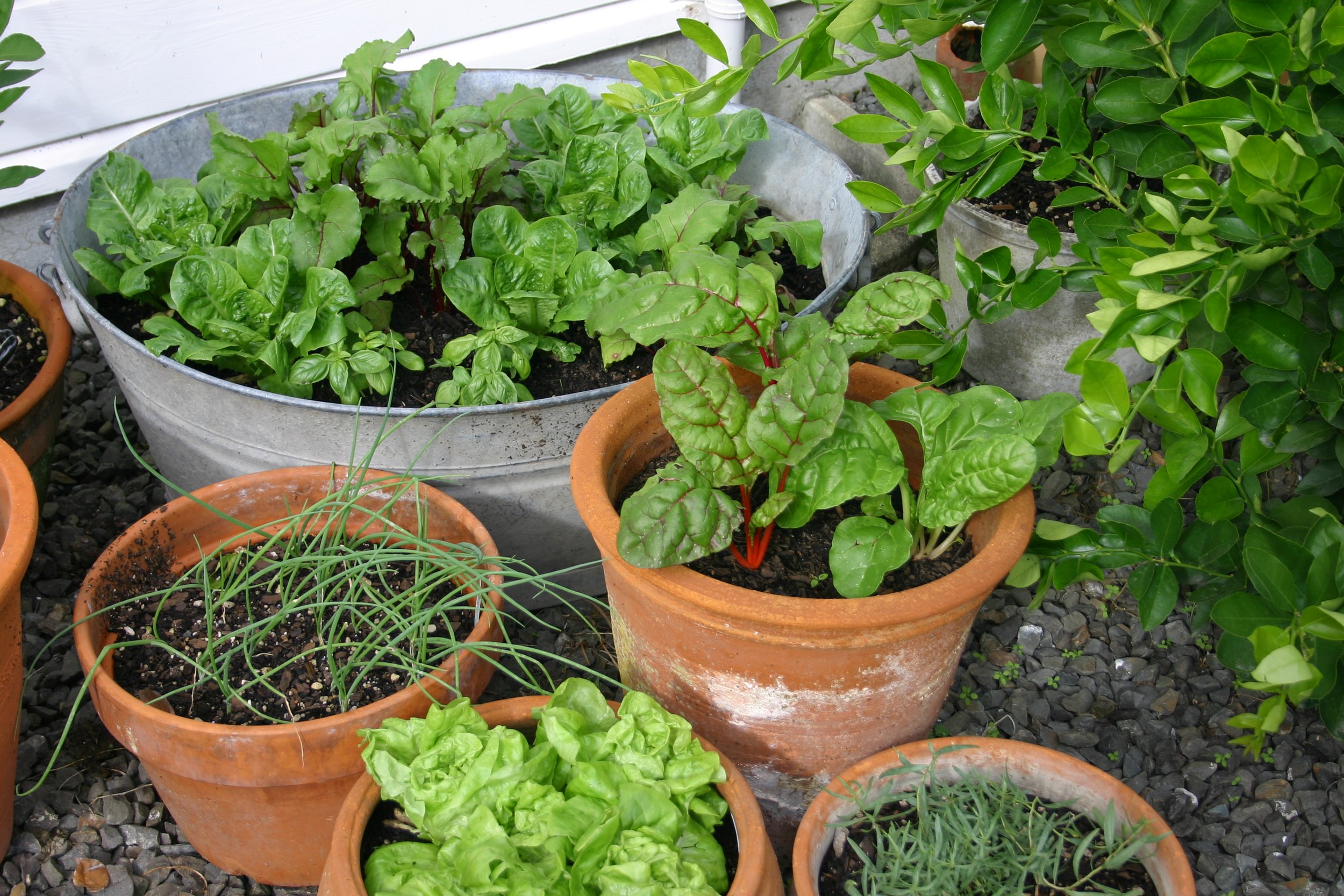How to grow vegetables in containers
Many vegetables do really well in containers. By following the basic principles of growing vegetables in a garden, and picking the right plants, you can grow a fair amount of food in just a few large pots!
One of the best things about container growing is the pots can be moved from one place to another, to give the plants the best micro-climate and show them off when they’re looking their best! To get started, find a sunny spot to place your containers and choose a few different vegetables that you and your family like to eat.
Type of container
Use the biggest containers you have space for to provide a deep growing medium for your vegetables.
Containers with a minimum depth of 40cm are ideal. This will mean you have to water and feed your plant less often, and they're more likely to produce a bigger crop, as they have more space to grow.
Tall crops such as tomatoes which require staking will need containers that are heavier and deeper to minimise the risk of tipping.
The container may be a plastic or pottery pot, grow bag, trough, barrel or bath. It will need to have at least one drainage hole 1-2cm in diameter.
Potting mix
We recommend you use only the best for your veggies!
Potting mix for vegetables needs to be free-draining but also have good water holding capacity.
We recommend our California Veggie Mix which contains Dolomite, Gypsum & Fertilisers to promote healthy plant growth.
Do not use garden soil in pots, as it will have weeds and become compacted causing poor drainage and aeration.
Feeding
Fast-growing vegetables thrive on an ample supply of nutrients, and constant watering can lead to nutrients being washed away from the pot.
To ensure your crops remain healthy and productive, consider incorporating a weekly regimen of liquid feeding. This can be reduced during the slower growing months of winter to 3-4 weeks.
This consistent infusion of vital nutrients will not only boost the health and vitality of your plants but also significantly enhance the overall yield of your vegetable garden.
We recommend using ican Fast Food, ican 100% Organic Vegetable Food or ican Ocean Grow
Watering
After planting, give your seeds or seedlings a gentle yet thorough watering to settle them in.
As the seasons change, be prepared to water your containers daily in spring and autumn, and even twice a day during the sizzling summer months. Water into the soil rather than the leaves of the plants this will help minimise disease.
To keep the soil moist and happy, consider adding a cozy layer of mulch using straw or compost. Your plants will love you for it!




